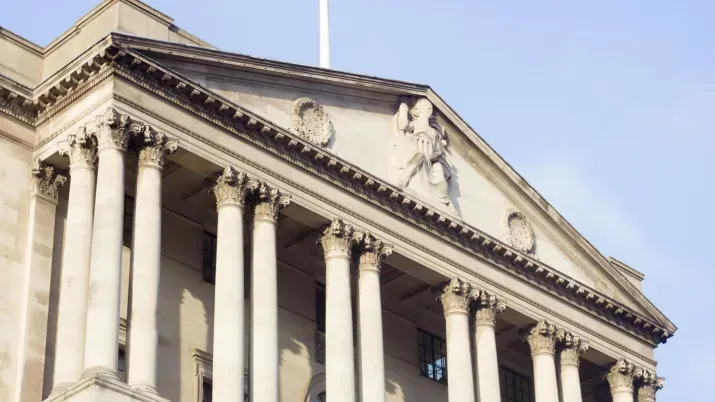The Rodney Blog 2021: New Cycle, Similar Playbook
TwentyFour
“This time next year, Rodney…”
Before my colleagues and I embark on our outlook for the coming year, we always begin by reflecting upon last year’s notes. Some years we feel pretty good about ourselves, but in other years events can render an outlook essentially useless and force us to change our view rather quickly. As you might have guessed, 2020 has been an example of the latter. All was not lost, since we had our noses buried deep in the late cycle playbook coming into 2020, but we certainly failed to predict a global recession at any point in the coming 12 months.
Looking back to the onset of the COVID-19 crisis, never before have we had to change our views (and our portfolios) so quickly, in the most frenetic few months of economic history any of us can remember. Once again it was a surprise or shock to the system that took a late cycle economy and threw it over the edge, plunging the world into recession in the most spectacular fashion. Despite not being positioned for recession, which of course was costly, our late cycle playbook really did help in the end as it ensured we had ample liquidity to capture the opportunities of the oversold market in March.
Naturally every downturn has its own unique characteristics, but since the recovery began to gain momentum it has followed many of the traits of a typical recovery, albeit at a pace never experienced before. We think the pace of change is likely to be one of the hallmarks of this economic recovery. This will potentially take valuations to uncomfortable levels a lot quicker than before, as the direct and indirect consequences of the extraordinary intervention from central banks and governments around the world inevitably find their way into financial markets.
With that in mind, we expect 2021 to be a good year for risk assets.
As ever our forecasts are based on a few key assumptions. The first of these is broad distribution of various COVID-19 vaccines in Q1 and beyond, facilitating a return to normal economic activity in most sectors and geographies. The second is that state and central bank support will remain firmly in place to foster the ongoing recovery, but there will have been casualties along the way and breakages in supply chains that will hinder productivity. However, the direction of travel will be clear and markets tend to like that. We also see a bullish consumer emerging in the second quarter, with frustrated pent-up demand driving spending a lot earlier than we might see in a normal early cycle environment, which should favour those developed markets with GDP driven largely by the consumer.
We begin as usual by building the key government bond yield curves, a discussion that has to start with the central banks.
The US and the Fed
Never fight the Fed, as the saying goes, but the Fed working in harmony with the US Treasury and deploying a whole new range of support programmes probably surprised just about everyone in terms of the impact it could have on both the economy and financial markets. The liquidity overspill has been a feature of a technically driven market throughout 2020, and we think this technical is set to remain in place in 2021 as the Fed continues to support rates and mortgage markets with $80bn a month in UST purchases and $40bn a month in mortgages. We don’t see the Fed Funds rate budging from its current 0.00-0.25% band, nor do we see the very strong forward guidance changing in 2021. This should serve to anchor the front end of the US yield curve.
However, the longer end of the yield curve could come under some pressure as the economy advances, especially in the second half once the consumer is revitalised. Our view on longer dated Treasuries is driven by inflation expectations, which investors seem to be overly relaxed about. We do not expect inflation to be a material concern for the next few years, but there appears to be a consensus view today (reflected in market pricing) that it will never come back, and there are a few reasons to suggest it would not take much to spook investors out of this comfortable view and apply negative pressure to longer dated government bonds.
First, a weaker dollar as a symptom of global recovery would normally mean commodity prices rally. Second, growing optimism on the recovery and a bullish consumer should have a very positive impact on the consumer-driven US economy. Third, we could have highly supportive monetary and fiscal policy while the recovery is in full flow, coupled with a Fed that has already said it will let inflation overshoot. Finally, and perhaps most significantly, the banks are no longer shrinking their balance sheets. In fact we expect them to be growing at a reasonable rate by the second half of 2021. Bank balance sheet contraction was a major disinflationary force through most of the previous cycle, one which isn’t present this time around.
Putting all this together it is hard to see Treasuries performing well in 2021, though we do not see yields gapping higher while the central bank remains so involved. Our forecast for the 10-year is for yields around 1.30% by year-end, resulting in losses of around 4% for the world’s risk-free benchmark. It also makes the US yield curve the least stable of the three that we will cover today, though we are confident that the front end remains fairly well anchored.
Europe and the ECB
Last year we wrote about the desperate need for fiscal stimulus in Europe, but that was before the pandemic. Now it is here and we think here to stay to nurture the recovery.
The ECB has also been bold with various support programmes, including the new Pandemic Emergency Purchase Programme (PEPP), which is now at €1.35tr and set to last until at least June. We see this being increased by as much as €500bn and extended until at least year-end 2021. The impact of the PEPP on Eurozone government bond markets should not be underestimated; the programme’s remaining funds are already enough to purchase all the forecasted net supply of government bonds in the Eurozone next year, and its capacity could stretch to double the amount of net new issuance with the increase we expect. This would create a very strong technical for this sector and make the yield curve incredibly stable, even if the yields are nose-bleedingly low. The biggest winner from the PEPP should be Italian BTPs, which we see further converging on Bunds in the coming 12 months. We forecast the 10-year Bund to finish 2021 at around -40bp and the BTP to tighten to around 20bp.
Alongside this the ECB will continue to employ its most effective of policy tools, namely the targeted long term refinancing operations (TLTROs), which at a rate of -0.75% give the banks funds at a highly attractive rate that they can lend onwards to the real economy in a targeted fashion. We think this works much better than negative rates alone, and it is something the Bank of England should be considering to employ as an alternative to a negative base rate.
UK and the Bank of England
Another one of our assumptions is that we will see a Brexit deal in the coming days, which would be quite a relief on a number of levels, but the UK economy has lost a lot of ground in the last five years and on top of this it has had a woeful nine months; it has performed worst in the G7 for most metrics on which the pandemic impact can be judged.
In sympathy with the US Treasury curve and with a slight change in inflation expectations, we project that longer dated Gilts will drift modestly higher during 2021, ending at around 0.40% and just about making the full year return negative.
Fiscal stimulus is still desperately needed but footing the bill is a reality that sits rather uncomfortably with the current government. This leaves the Bank of England in probably the worst position of the three major central banks we discuss in this outlook. We do think QE will be incrementally increased as capacity is utilised as the year wears on. There is also a lot of talk about negative rates within the ranks, but there is no consensus at this stage. We do expect a further rate cut but only to zero; despite its small size, the full impact of that 10bp cut should at least be passed on by the commercial banks, whereas we know a cut below zero won’t be.
This is why we have called on the BoE to introduce a new negative rate TLTRO at -0.25%, which would allow the full benefit of a sub-zero interest rate to be properly transmitted to the real economy. Some of the impact of our proposed negative rate TLTRO would likely spill into Gilts, despite this not being the purpose of the facility, but this is more of a deployment and timing issue, and the QE of course would mean the central bank being fully engaged in keeping the yield curve as low and flat as possible.
Credit rally set to continue
We will start with investment grade credit, since quality always tends to lead the recovery and this year has been no exception, especially after the Fed included IG credit under its umbrella. However, as we are about to enter 2021 it is worth reflecting on just how far IG has come and how quickly it has got here. US IG is just 106bp over Treasuries versus a prior cycle tight of 88bp reached in January 2018, euro IG is 89bp over Bunds versus a February 2018 tight of 70bp, and in sterling IG the spread is still 118bp over Gilts versus a January 2018 tight of 104bp.
We think new tights will be made next year, which would be quite incredible barely a year into a new cycle, particularly considering it took nine years for spreads to make the same round-trip in the wake of the 2008 crisis. With underlying government bond yields drifting higher, that spread tightening is going to be eroded, so it is really worth considering which of the government yield curves will be most stable when deciding where to obtain IG credit exposure. We would certainly favour both the euro and sterling curves over the US curve for total return on a currency neutral basis.
High yield is a lot more interesting, especially when we consider the likely direction of both credit migration and default rates. Negative credit migration peaked in Q2 and has been improving progressively since, to the point that it is likely upgrades will outnumber downgrades by the middle of 2021, though this will depend on geography. Default rates for speculative grade credit have been markedly lower than even the most bullish of forecasts earlier this year, and are likely to peak by the end of Q1. Going into year-end the euro HY rate is likely to only be around 4%; it probably won’t get much higher and is likely to fall to 3% or even lower by the end of 2021. In US HY the indices are tilted to industries that are more pro-cyclical (such as energy) so the default rates tend to reflect that, but once again it is hard to see defaults getting past 7% at their peak before tailing off to a much more manageable 4% by year-end 2021.
With yield being such a scarce commodity and the positive economic developments in the background, it is hard to see many mainstream sectors of fixed income outperforming high yield next year. We expect credit spread contraction across the board and credit compression by ratings category. At the time of discussion sterling HY spreads were at 464bp, euro HY at 366bp and US HY at 425bp. We forecast 50bp, 40bp and 30bp of tightening respectively for these markets during 2021, and with the mid part of the yield curves much better anchored (the average maturity of the credit indices for high yield is just short of five years) we think investors can make their yield plus a couple of percentage points of capital gains. It is worth noting that the sector tights seen in November 2017 are still 115bp away for sterling HY, 130bp for euro HY and 99bp for US HY, so even after the 2021 performance projected there is plenty of margin for future compression as the cycle wears on.
There are a couple of other sub-sectors that are worthy of comment, including our top pick for 2021 which again is the banking sector and in particular the now mature market in Additional Tier 1 (AT1) bonds, or Cocos. We always thought it would take another recession for the banks to prove to the global investor base that they were different animals after a decade of building up their resilience for future crises. This also went for the banking regulators, which have stepped in and acted decisively on buffer capital and also capital retention with the curtailment of dividends. This has allowed the banks to take significant provisions for credit losses while at the same time actually increasing their buffer capital. It won’t have been a great year for their results or their equity, but it has been a game changer for their subordinated bonds, which have traded with a significant premium for 12 years now. We see this premium being structurally eroded by investors over the course of this economic cycle. The move has already begun but there is a lot further to run. We see the Coco bond index tightening by 90bp in 2021 to around 325bp, which would give investors a healthy coupon and several points of capital gain. For investors looking to be pro-cyclical, this is one high conviction way to do so without having to move into the very low ratings bands or unwanted sectors where the default rate is likely to be highest.
Another way to become more pro-cyclical without having to deviate from our original credit choices is to move down the capital stack of an issuer where we are comfortable with the credit story. The spread differential between senior and subordinated debt for the same issuers widened significantly during the worst of the market turmoil in Q1, and as in any recovery phase we expect this spread to narrow as the cycle progresses. Corporate hybrids are certainly worth a mention as a lower risk credit compression play in 2021.
Potential pitfalls
Before wrapping up a rather bullish outlook, it is worth highlighting a few pitfalls to look out for. There are a handful of sectors we would be more cautious on as they have been facing structural issues as well as cyclical ones. Nothing sticks out more than bricks-and-mortar retail, but automotive is also going through big changes, as is commercial property, though here valuations have still not really felt the pain of the structural change in working behaviour that we are likely to see in the year ahead. Travel is another one that will face significant challenges going forward. Governments will soon need to start focusing on the revenue side of their balance sheets too, so we will beware easy-to-tax industries such as gaming, which are well represented in the major bond indices.
Regulatory change is also worth a mention. Just like the global financial crisis, where banks took the bailouts and paid for them with a decade of structural change, we would be surprised not to see other sectors that required assistance in 2020 facing regulatory change to make them more resilient for the future. This should broadly be good for bondholders but a drag for shareholders, since dividends could be suppressed and capital increased in these companies. While initially markets don’t tend to respond well to increased regulatory burden on any industry, these changes could present a new range of opportunities for bondholders – as they did in the banking sector post-2008 – as balance sheets in the newly burdened sectors begin to improve.
If we do experience the kind of year that we are expecting in 2021, we would not be surprised to see fiscal expansion being refocused to fiscal discipline; the market may not like this much when it comes, but we think it is still a good 12 months away and a lot can happen in between. It’s hard to see Germany, for example, going from €200bn of expansion back to zero again in the space of 12 months, but it is likely they will be reining in fiscal expansion significantly in 2022.
Lastly we cannot have an outlook without commenting on ESG. We really thought 2020 was going to be the year that the global investor mind-set changed and gave this hugely important topic the focus it deserves. We felt companies making more sustainable choices would be rewarded with tighter spreads and those that failed to meet expectations would be penalised with higher borrowing costs. This didn’t happen, as we had one enormous distraction, but the mind-set is there and we fully expect both investors and companies to be rewarded for making ‘good’ choices next year, so at the very least we would expect ‘sin’ industries to underperform in 2021.
In conclusion then, we see a typical early cycle year ahead of us with a similar playbook to prior recoveries, though nuanced of course for the specifics of what we have just been through. Speed of market movement will be a feature of this recovery as the market realises many of the same trends are firmly in place, and with the incredible technical backdrop this means lower yields as the cycle progresses. Demand for income was perhaps the main theme of the previous cycle and it is likely to be an even greater theme in this next cycle. Income currently can only come from risk assets as risk-free markets are still likely to be return-free until rates curves adjust higher, which is why we are convinced global credit spread contraction is the main fixed income theme for 2021.
That just leaves me to thank our readers and investors across the globe for your incredible support in this most dramatic year. We truly appreciate your challenging questions as we seek to keep you in touch with our views on the market as it develops. We hope you continue to find our notes of use.






